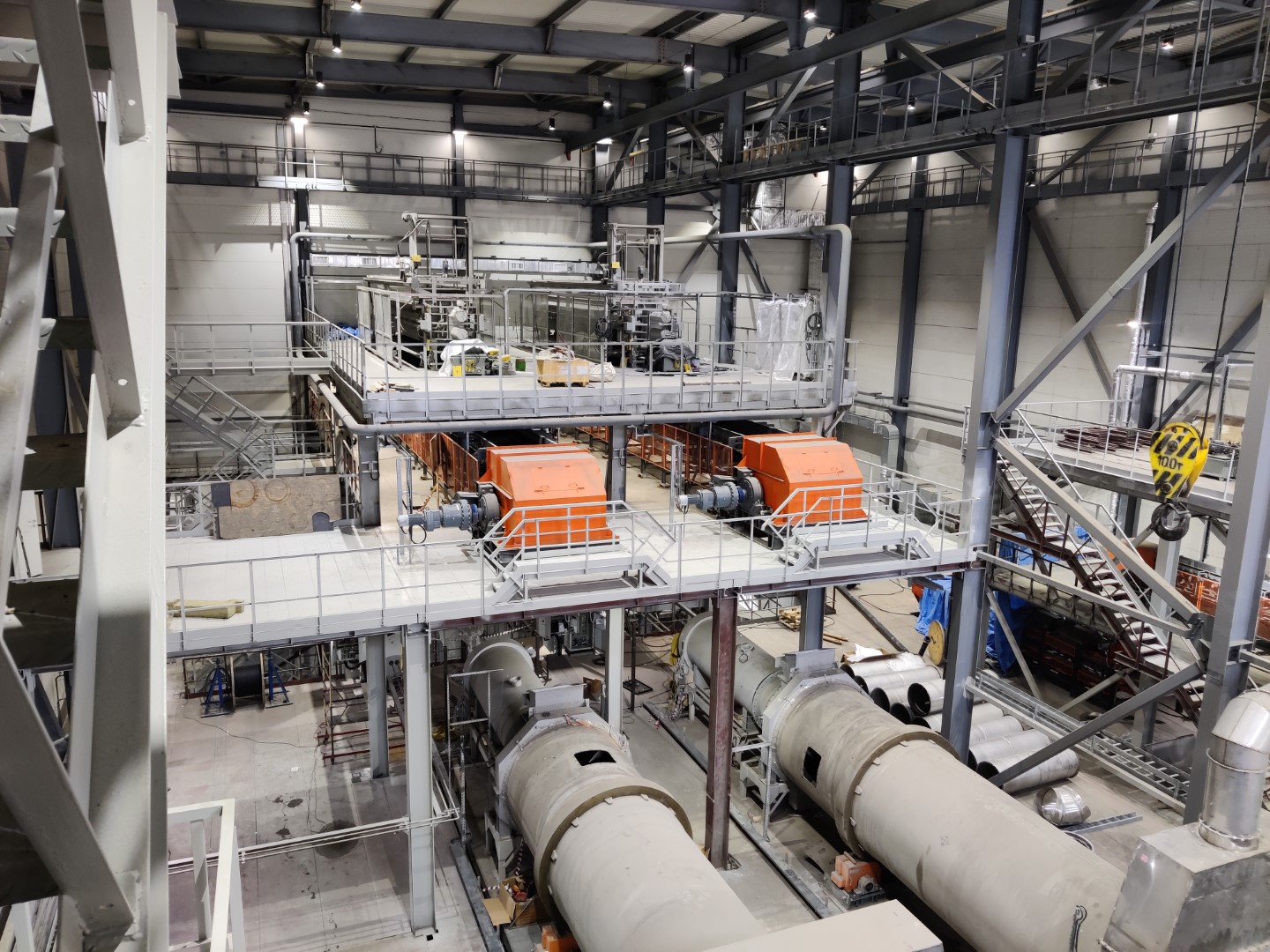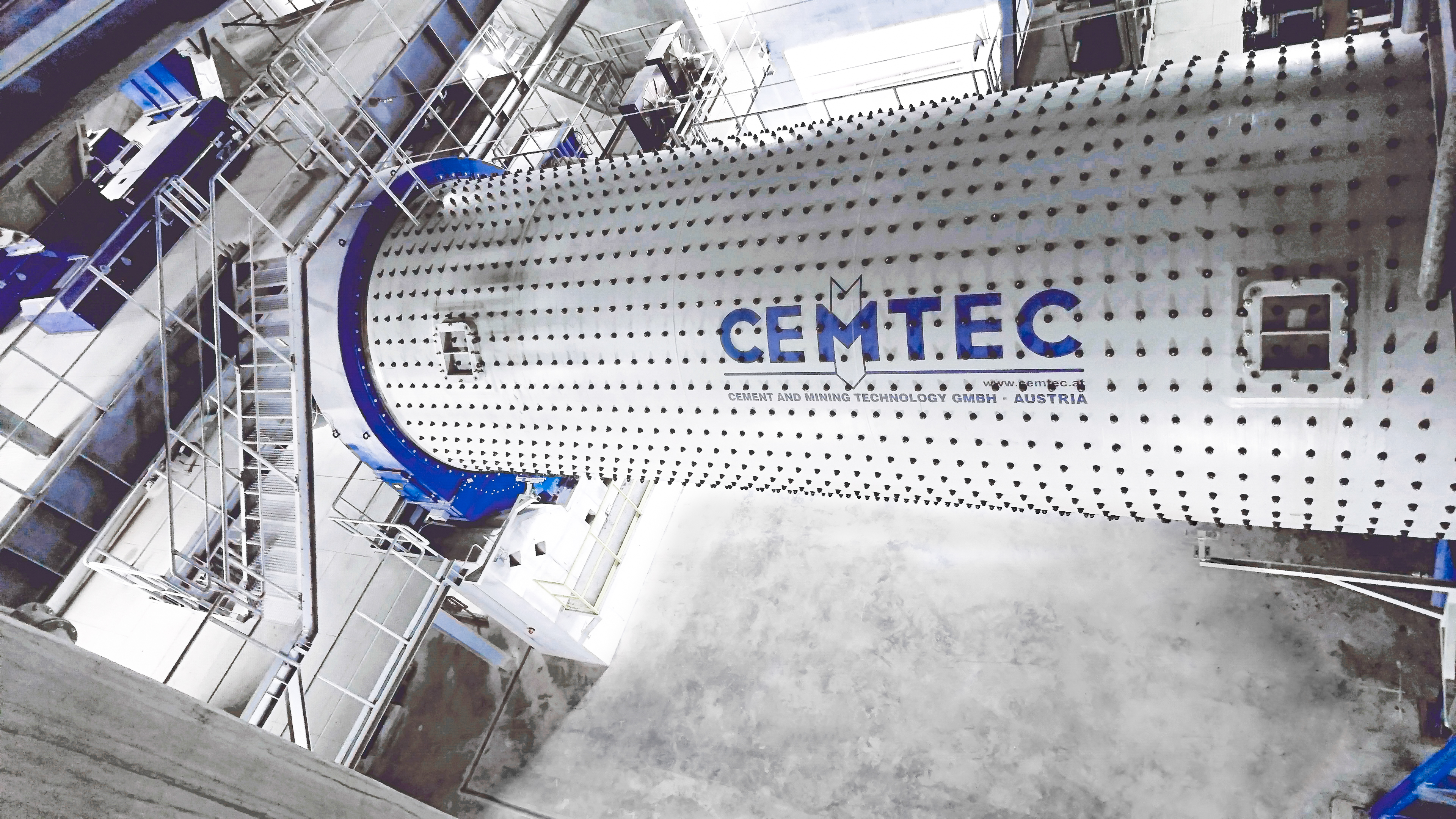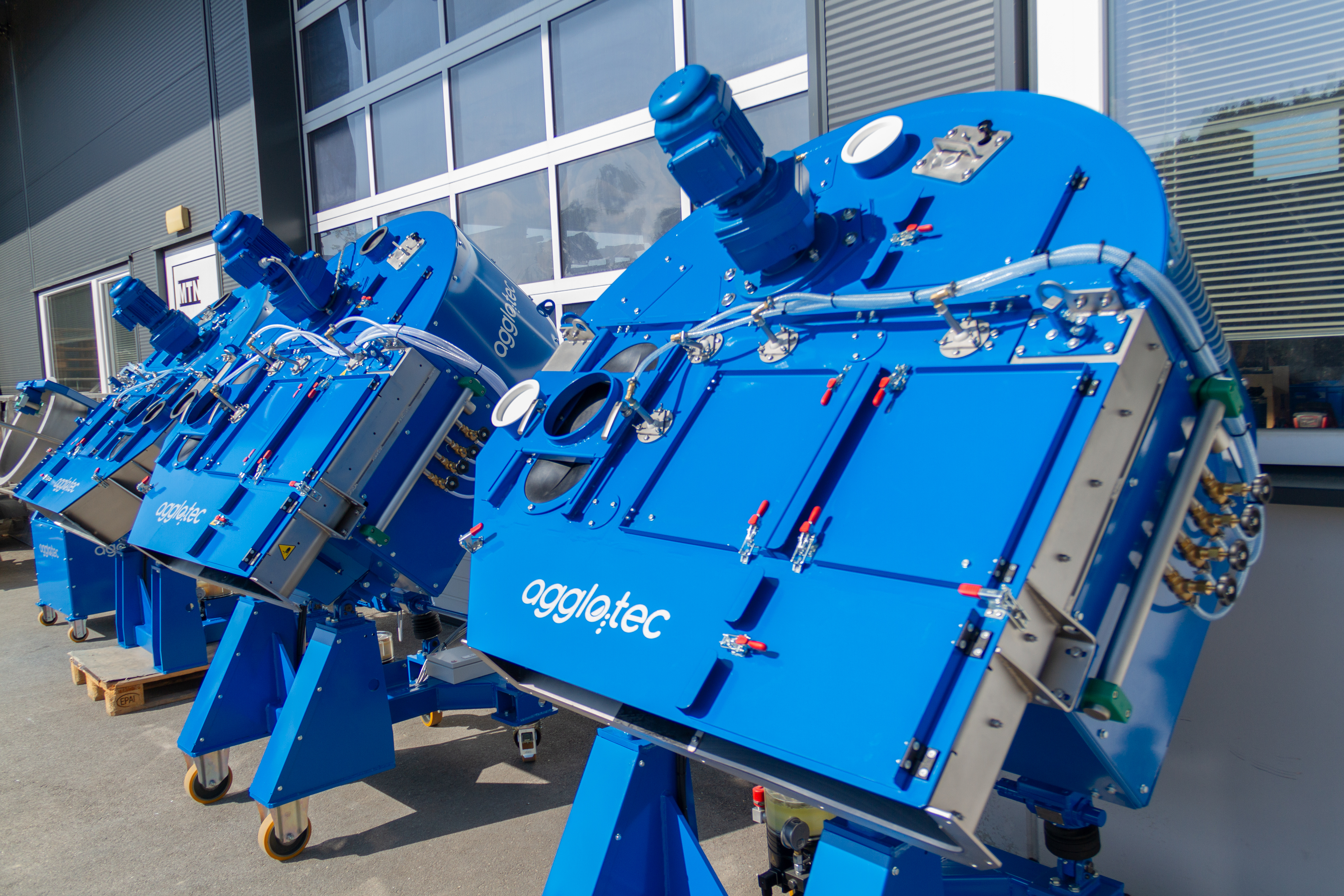Dynamic Air Classifiers
CTM Series
Classification in new dimensions
The new CTM fine classifier series is built on the latest advancements (4th generation) in classification technology. This series was developed by a team of international experts with extensive knowledge in machine and process engineering, as well as in the design of air classifiers. These classifiers are specifically designed for processing materials such as metal oxides, mineral fillers (including CaCO3, talcum, mica, and dolomite), cement, and slag. The development also includes essential steps such as integration with the grinding unit and the configuration of the necessary peripheral equipment, such as materials handling, air technology, and product transport.
The design of this series was geared towards optimizing production, operating, and maintenance costs. This was achieved through new combinations of rotor geometry and enhanced flow design. It is reflected in classification efficiency, minimal bypass of fines (refer to Tromp's curves), and the resultant decrease in pulverization and classification energy.

Advantages
Extremely good top cut (d98)
Reduced pressure loss
Reduced power consumption
Low operating costs
Minimal wear
Low vibration level
(max. operating speed < n-critical)
CTM classifier alternative designs
The following versions are available for the CTM Series:
Material infeed: Above air slide
Fine particle discharge: Top
Drive unit: below classifier
Material feed: below with air flow (used for vertical roller mill)
Fine particle discharge: Below
Drive unit: Top
Material feed: From above + „air-swept“ - for combination
Process design, selectivity, efficiency of CTM classifiers

The process design is geared to production and product requirements. The fine product temperatures can be optimally set or adjusted for downstream process steps by appropriate configuration of the air circulation. CTM classifiers can thus be operated in an open or closed/semi-closed circuit.
The newly developed CTM series, designed for processing minerals and fillers, stands out due to its exceptionally high yield of fine particles and low levels of screen residue. This leads to improved optimization of production and investment costs, along with a reduction in specific grinding energy requirements. This again has a critical influence on the yield of fines and the bypass of fines due to the selection and degree of grinding conditioning.






